Green Investments Unlocked: Navigating Financing Programs for Energy Retrofits
April 2, 2024
Addressing climate change has become a pressing matter, especially considering the significant impact of the building sector on global energy consumption and greenhouse gas emissions. With buildings consuming over 38% of the world’s energy and contributing to a third of global emissions, as highlighted by the International Energy Agency, the need for change is clear. Energy retrofits offer a promising solution, potentially cutting energy use in buildings by up to 39%, out of which 28% is recurring year over year because energy-related, leading to substantial savings. Yet, the upfront costs can make property owners and landlords careful. This discussion digs in into the various financial avenues open for energy retrofitting, highlighting both their environmental benefits and economic advantages.
Types of Financing Programs
1 - Government Incentives
Government incentives provide a substantial push for energy retrofits, offering tax rebates, grants, and subsidized loans aimed at mitigating upfront costs. The appeal of these programs is significant; for example, the U.S. Department of Energy reports that tax incentives and rebates can cover up to 30% of the total cost of energy-efficiency projects. The direct reduction in project costs facilitated by these programs enables property owners to achieve long-term savings, with energy consumption reductions ranging from 20% to 39% post-retrofit.
2 - Private Loans
Private loans provide an alternative funding avenue, offering a spectrum of interest rates and terms based on the borrower's financial standing and the project specifics. The global green loan market, which includes loans for such retrofit projects, reached a substantial $156.5 billion in 2019, indicating robust financial support for sustainable initiatives. These loans afford property owners the flexibility to implement necessary changes without the strict constraints of government programs.
3 - Energy Savings Performance Contracts (ESPCs)
Energy Savings Performance Contracts (ESPCs) offer a no-upfront-cost solution, with energy service companies (ESCOs) covering the initial investment. The ESCO then recoups this investment from the subsequent energy savings, which can be substantial. Buildings that have undergone ESPC-financed retrofits typically see energy savings ranging from 20% to 50%, according to the U.S. Environmental Protection Agency. This model shifts the financial risk from the property owner to the ESCO, providing a financially safe pathway to energy efficiency.
4 - Property Assessed Clean Energy (PACE) programs
Property Assessed Clean Energy (PACE) programs, another innovative financing solution, have enabled thousands of commercial and residential property owners to finance retrofit projects. By the end of 2019, residential PACE programs had funded over 220,000 home upgrades in the United States, totaling more than $5 billion, demonstrating the program's widespread acceptance and success. PACE financing stands out due to its repayment method via property taxes, offering long-term payback periods that can significantly lower annual costs and improve accessibility for many property owners.
By leveraging these diverse financing options, property owners can reduce energy consumption by significant margins, contributing to a greener future while benefiting from considerable economic savings. As highlighted by financial leaders like Grégoire Baillargeon, emphasizing the synergy between electrification and innovative technologies like renewable energy and AI, aligns with the growing recognition of energy retrofits as strategic investments that extend beyond immediate financial gains, resonating globally beyond just Quebec.
 Credit: LaPresse
Credit: LaPresse
“ For Quebec in this century, electrification is an opportunity to tackle with resources such as renewable energy and artificial intelligence “ – Grégoire Baillargeon, President, BMO Financial Group, Quebec.
Criteria for Eligibility & Application Process
Eligibility for financing is multifaceted, influenced by building characteristics, geographical location, and project scope. For instance, PACE programs, though expanding, are still not available in all jurisdictions. The eligibility specifics can significantly impact a project's approach, necessitating a thorough understanding tailored to each case.
Consequently, the application process for retrofit financing is intricate, requiring detailed documentation and planning. Success rates vary, but a well-prepared application, substantiated by an energy audit and a clear retrofit plan, can significantly enhance approval odds. The procedural complexity underscores the importance of comprehensive preparation and strategic planning in securing financial support.
Case Studies
The Rainier Tower in Seattle serves as a great example for energy retrofitting, highlighting the impact of sustainable upgrades. The project focused on upgrading the HVAC system with energy-efficient models and installing variable frequency drive fans, replacing outdated lighting with LED bulbs, and improving insulation with double-glazed windows and enhanced exterior materials. These changes led to important outcomes, with the tower experiencing over 35% energy savings. This reduction not only translated into considerable cost savings but also elevated the building’s competitive edge in the real estate market. The success of this retrofit demonstrates the feasibility and benefits of investing in energy efficiency for commercial buildings.

Challenges and Solutions
Navigation of the financing process for energy retrofits can be challenging, including the navigation of intricate applications and meeting strict criteria, which can become complicated for property owners. The first step to overcome these is the simplification of applications and good understanding program requirements. Additionally, addressing initial costs through available grants and accurately projecting returns can make the investment more manageable.
Future Trends in Energy Retrofit Financing
The future of retrofit financing is mostly characterized by innovative trends like the rise of green bonds, which have seen a remarkable increase, with the global green bond issuance reaching a record $270 billion in 2020, up from $42 billion in 2015. Such trends highlight the evolving financial mechanisms supporting sustainable development and energy efficiency.
Conclusion
The transition towards energy-efficient buildings through retrofits is imperative for both environmental sustainability and economic vitality.
The financial barriers, although significant, can be navigated through an understanding and utilization of available financing options. The global shift towards sustainable infrastructure, highlighted by Grégoire Baillargeon’s perspective, requires a collective effort and strategic investment, where financing plays a pivotal role.
As the sector continues to evolve, embracing these opportunities can pave the way for a more sustainable and economically viable future.
References
- Database of State Incentives for Renewables & Efficiency (DSIRE)
- What is Energy Saving Retrofit? (Safeguard)
- What is energy efficiency retrofitting? (European Investment Bank)
- What is retrofit? (Center for Sustainable Energy)
- Energy Transition (BMO)
- Retrofitting (Government of Canada)
- Deep Retrofits. Making Existing Homes Net-Zero. (Retrofit Canada)
- Property Assessed Clean Energy Programs (Energy.org)
- Rainier Tower (Seattle Gov)

